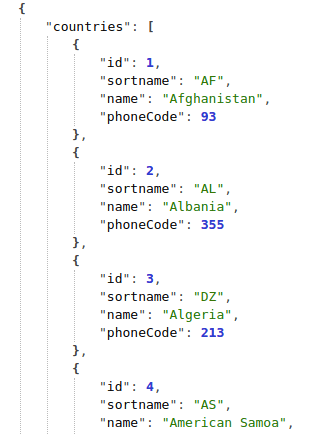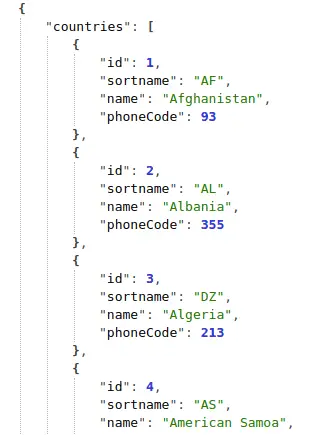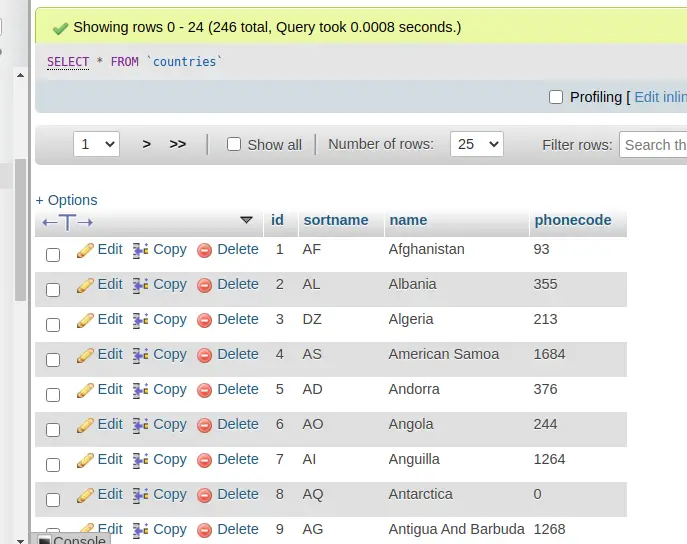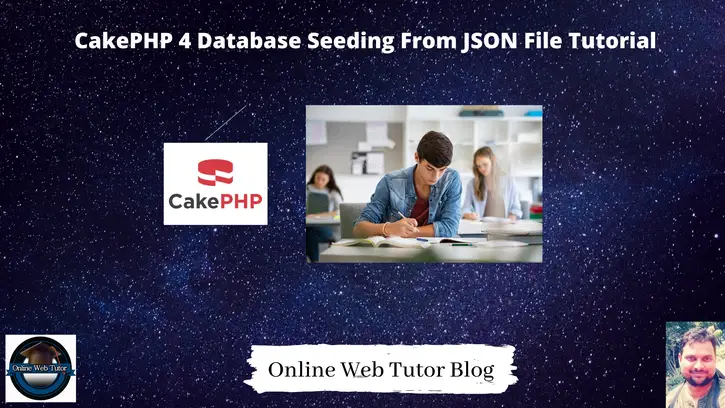Inside this article we will see the concept of CakePHP 4 Database Seeding from json file. CakePHP 4 database seeding from json file is technique to dump test data into tables in bulk.
This tutorial will be super easy to understand and it’s steps are easier to implement in your code as well. Database seeding is the process in which we feed test data to tables. We can insert data either using Faker library, manual data or means of some more data sources like CSV, JSON.
In this tutorial we will use JSON file to seed data into database table using CakePHP 4.

Learn More –
- CakePHP 4 How To Create Migrations For Database
- CakePHP 4 How To Rename Table Using Migration
- CakePHP 4 How To Seed Data in Database Table Tutorial
- CakePHP 4 How To Seed Specific Database Seeder Tutorial
Let’s get started.
CakePHP 4 Installation
To create a CakePHP project, run this command into your shell or terminal. Make sure composer should be installed in your system.
$ composer create-project --prefer-dist cakephp/app:~4.0 mycakephp
Above command will creates a project with the name called mycakephp.
Database Connection
Open app_local.php file from /config folder. Search for Datasources. Go to default array of it.
You can add your connection details here to connect with your database. It will be like this –
//...
'Datasources' => [
'default' => [
'host' => 'localhost',
/*
* CakePHP will use the default DB port based on the driver selected
* MySQL on MAMP uses port 8889, MAMP users will want to uncomment
* the following line and set the port accordingly
*/
//'port' => 'non_standard_port_number',
'username' => 'root',
'password' => 'sample@123',
'database' => 'mydatabase',
/*
* If not using the default 'public' schema with the PostgreSQL driver
* set it here.
*/
//'schema' => 'myapp',
/*
* You can use a DSN string to set the entire configuration
*/
'url' => env('DATABASE_URL', null),
],
//...
//...
You can pass host, username, password and database.
Successfully, you are now connected with the database.
Create Migration
Let’s create a migration file for “countries” table.
Open project into terminal and run this command
$ bin/cake bake migration CountriesTableThis command will create a migration file inside /config/Migrations folder. File name will be prefixed with the timestamp value and look like 20220217021429_CountriesTable.php
Open migration file and write this code into it to create “countries“ table schema.
<?php
declare(strict_types=1);
use Migrations\AbstractMigration;
class CountriesTable extends AbstractMigration
{
/**
* Change Method.
*
* More information on this method is available here:
* https://book.cakephp.org/phinx/0/en/migrations.html#the-change-method
* @return void
*/
public function change()
{
$table = $this->table('countries');
$table->addColumn('sortname', 'string', [
'limit' => 10,
'null' => false,
]);
$table->addColumn('name', 'string', [
'limit' => 120,
'null' => false,
]);
$table->addColumn('phonecode', 'string', [
'limit' => 100,
'null' => false,
]);
$table->create();
}
}
Run Migration
Open terminal and run this command to create table schema.
$ bin/cake migrations migrateIt will create countries table in database.
Prepare JSON Data File
As we have table countries in which columns as id, name, sortname, phonecode.
We will take a JSON file in which properties of each object will be ID, Sortname, Name & Phonecode. Rest we need data into it.
When you will download the given file it will be in .txt format. Rename file into .json and place this countries-data.json file inside /webroot/data folder.
Open countries-data.json file, you should see –

Create Data Seeder
To create data seeder, run this command to terminal.
$ bin/cake bake seed CountryIt will create a file CountrySeed.php inside /config/Seeds folder.
Open CountrySeed.php and write this code into it.
<?php
declare(strict_types=1);
use Migrations\AbstractSeed;
class CountrySeed extends AbstractSeed
{
public function run()
{
$data = [];
$json = file_get_contents(WWW_ROOT . "data/countries-data.json");
$countries_data = json_decode($json);
foreach ($countries_data->countries as $key => $value) {
$data[] = [
"sortname" => $value->sortname,
"name" => $value->name,
"phonecode" => $value->phoneCode
];
}
$table = $this->table('countries');
$table->insert($data)->save();
}
}
WWW_ROOT is CakePHP constant which returns the path up to /webroot folder.
Inside above code we are inserting all rows of countries (json) into table.
Run Seeder
Back to terminal and run this command to seed data into table.
$ bin/cake migrations seed --seed CountrySeedThis command will run the CountrySeed seeder from Seeds folder.

We hope this article helped you to learn about CakePHP 4 Database Seeding from JSON File Tutorial in a very detailed way.
If you liked this article, then please subscribe to our YouTube Channel for PHP & it’s framework, WordPress, Node Js video tutorials. You can also find us on Twitter and Facebook.
Read more